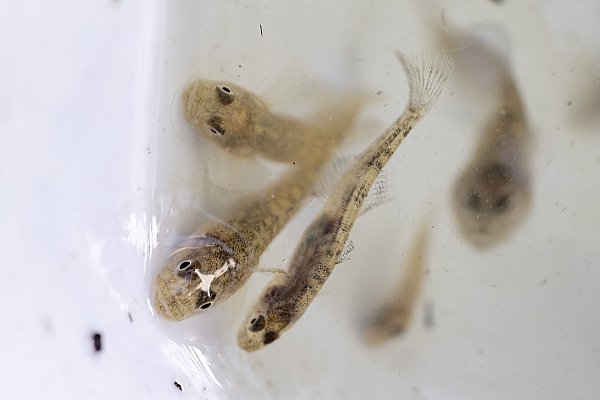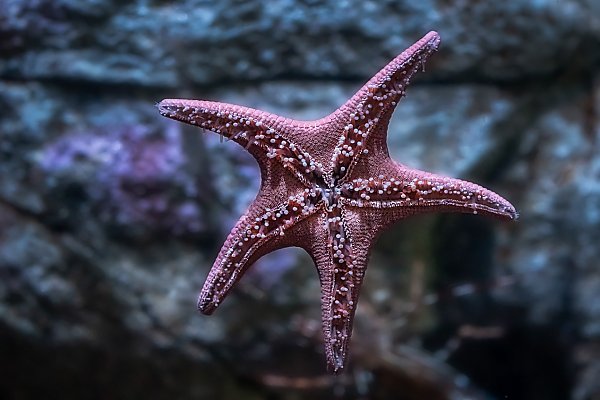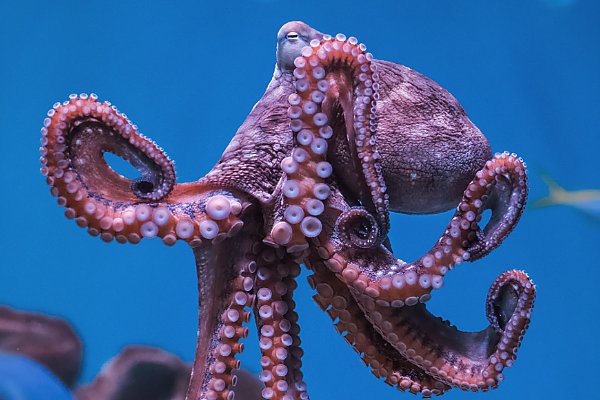New Sea Jellies Now on View Were Cultured at the Aquarium
Helvola sea nettles are found in cool ocean waters surrounding Japan. They have a lifespan of about nine months to a year.

A helvola sea nettle, with a pale white bell, frilly oral arms, and yellow-orange tentacles floats with a black background. Credit: Brandi Kenney
December 9, 2019
Helvola sea nettles bred at the Aquarium are now on view in the Northern Pacific Gallery. This is the first time an aquarium in the United States has successfully cultured and raised this species. Aquarist Josh Wagner experimented with different types of food for the jellies and chemical compounds to stimulate their reproductive cycle.
Helvola sea nettles are found in cool ocean waters surrounding Japan. As adults these sea jellies have a pale golden-colored bell (the “body” of the sea jelly) that is about six inches wide with radial stripes, oral arms (the pale, frilly appendages at the center of the bell’s underside) about 18 inches long, and about forty tentacles (the darker-colored thin appendages lining the bell). In the wild these jellies have a potent sting. Their venom has even been used in scientific experiments to destroy cancer cells. But according to Wagner, jellies born in an aquarium setting have a milder sting.
Wagner began the culturing process by acquiring wild male and female helvola sea nettles from Japan. These adults were on display at the Aquarium in 2018. To get them to reproduce, he left the jellies together in a behind-the-scenes holding area overnight, allowing them to send each other chemical signals to release eggs and sperm.
After fertilization, Wagner could see the resulting larvae under a microscope. Next, the larvae settle on a hard surface, becoming polyps. The polyps can reproduce asexually, budding off baby jellies, called ephyrae. It was at this stage that aquariums have had difficulty working with this sea nettle species.
To overcome this hurdle, Wagner fed the polyps a varied diet to find a type of food that would help them grow successfully and produce ephyrae. He also tried introducing various chemical compounds to alter the water chemistry and stimulate strobilation, the process the polyps undergo when they stack up and bud off ephyrae. His efforts were successful in July, when his polyps strobilated and produced healthy baby sea nettles.
The adult sea nettles are fed a diet of mostly brine shrimp, live mysid shrimp collected locally, and a cocktail of blended krill. The species has a lifespan of nine months to a year. The Aquarium’s helvola sea nettles will be on display for the next several months.






